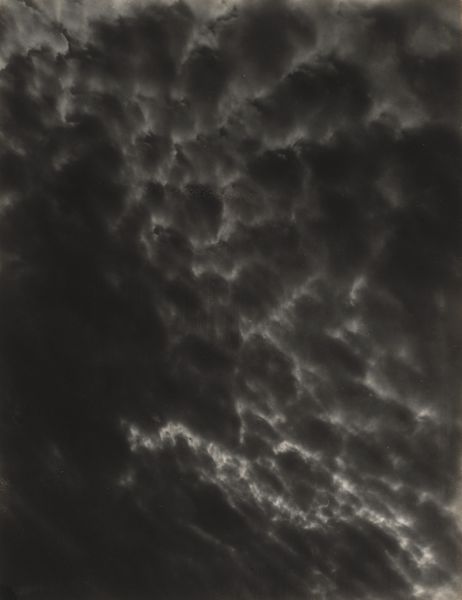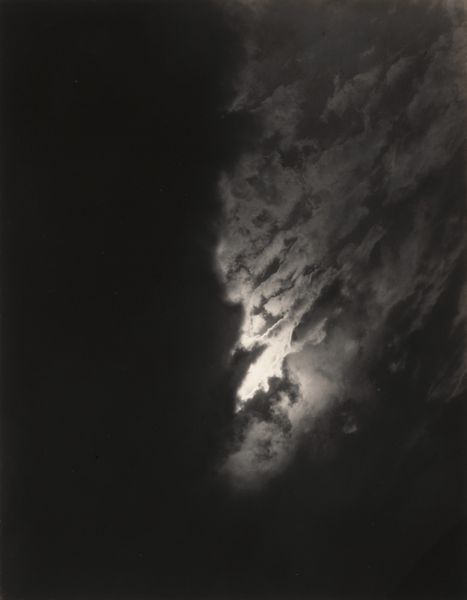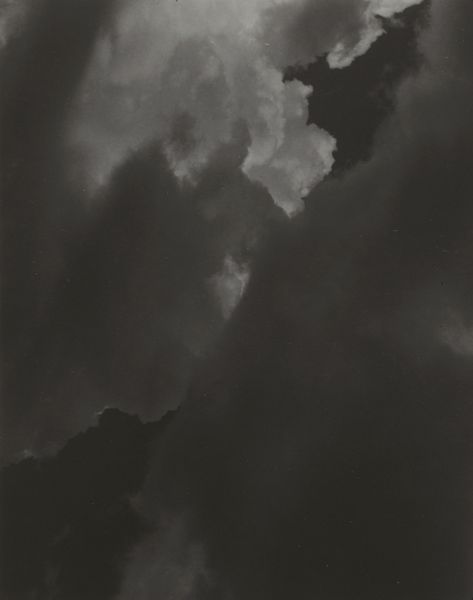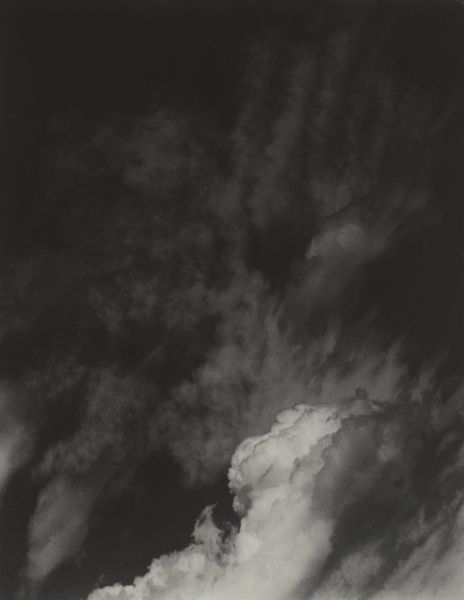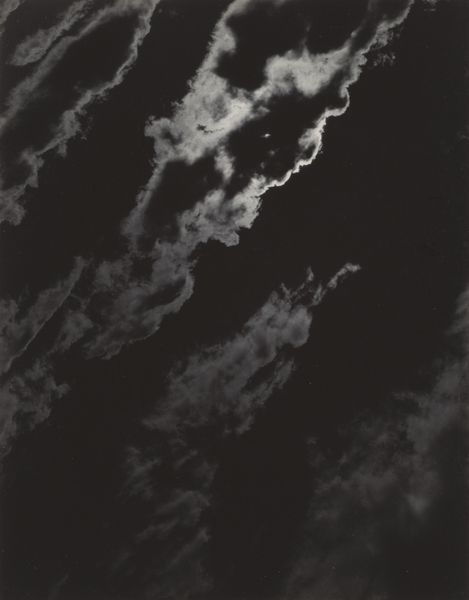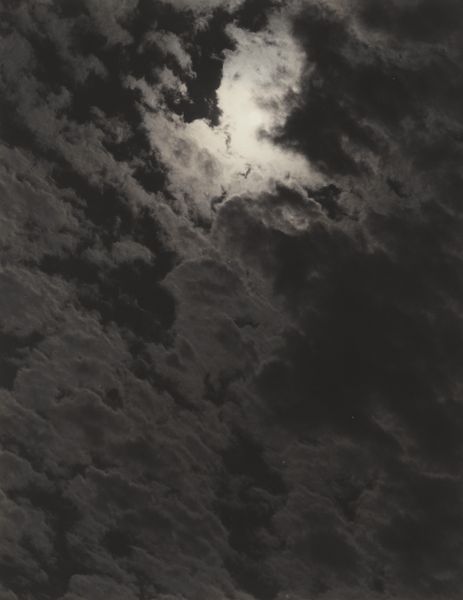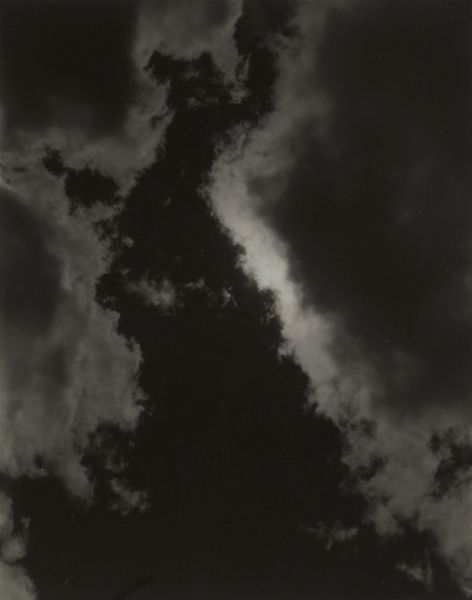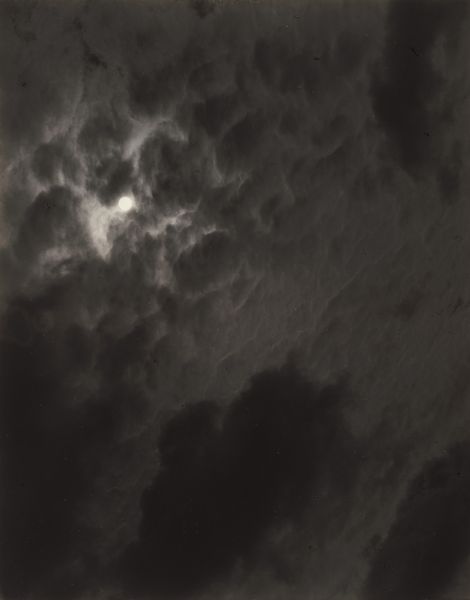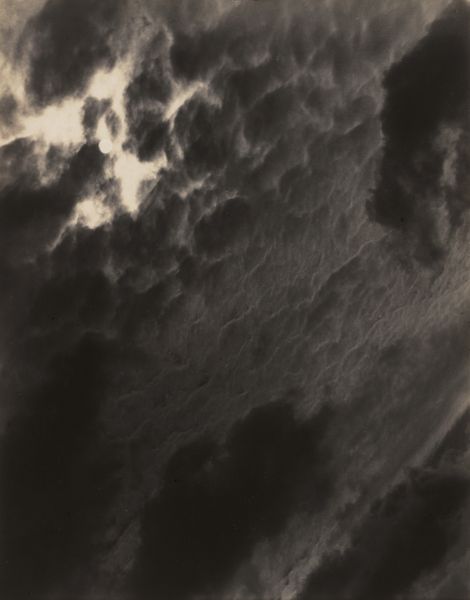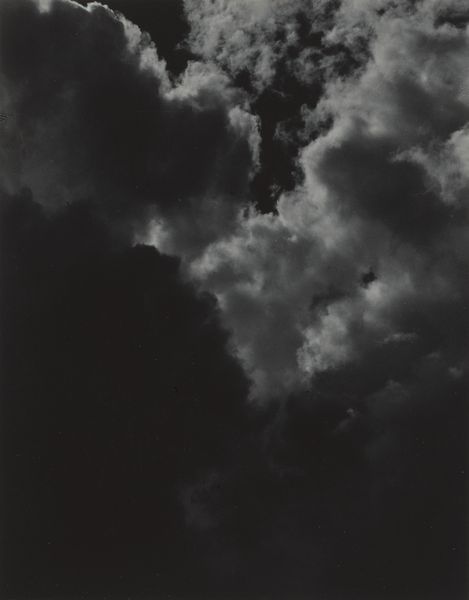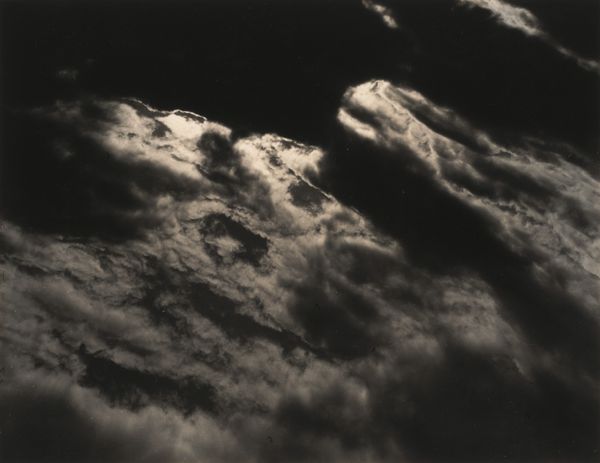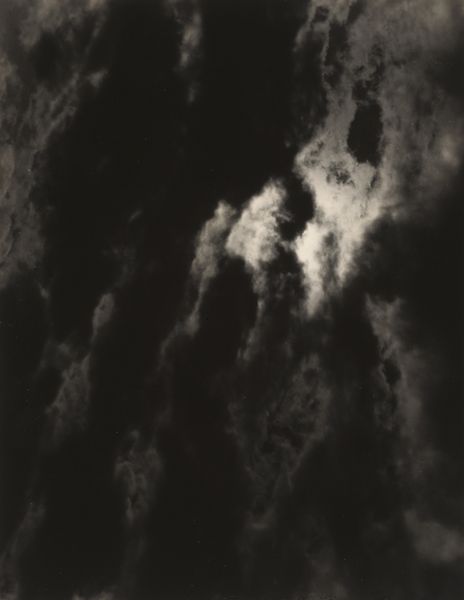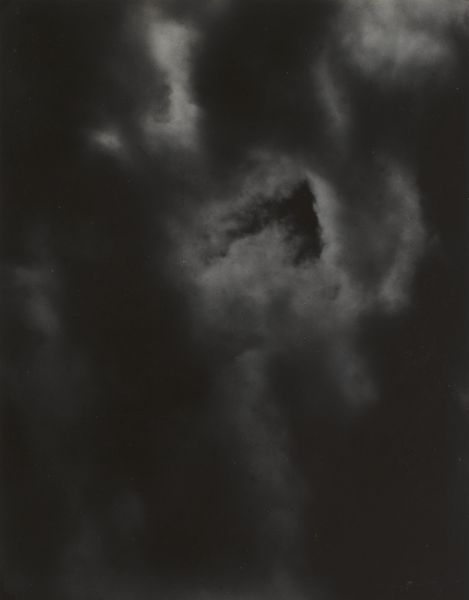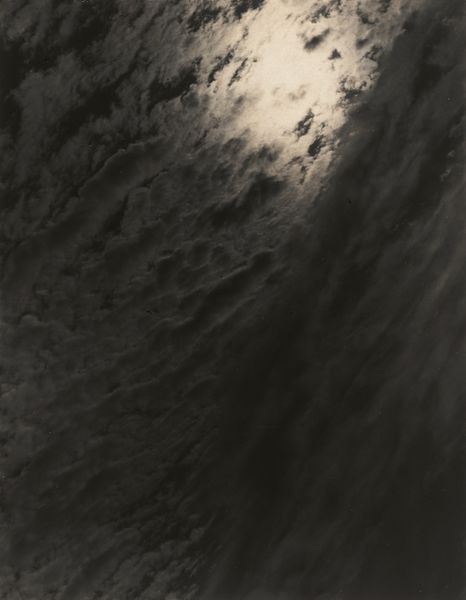
Dimensions: sheet (trimmed to image): 11.8 x 9.2 cm (4 5/8 x 3 5/8 in.)
Copyright: National Gallery of Art: CC0 1.0
Curator: Here we have "Equivalent K3," a gelatin silver print by Alfred Stieglitz from 1929. It's part of a larger series that he referred to as "Equivalents." Editor: My first thought is just how incredibly atmospheric it is. A brooding sky, full of shadow and light fighting for dominance. It feels heavy with unspoken meaning, charged with a latent anxiety. Curator: Exactly! Stieglitz sought to capture not just a scene, but a feeling, an emotion. The clouds are a metaphor, a symbol for inner states. The 'Equivalents' are meant to be equivalent to his own feelings at the time, expressing the artist's inner emotional landscape through abstract symbolism. Editor: I find myself wondering about that emotional landscape. Given the time period, the interwar years, with the rise of fascism and social upheaval, how much of that seeps into the image? The murkiness, the almost violent contrast – it speaks to a deep sense of uncertainty, perhaps even dread, which might be read as a societal mood of impending chaos and disaster. Curator: Absolutely, context is vital here! The "Equivalents" were, in part, a response to criticism that his earlier work focused too much on subject matter. He wanted to prove photography could be pure expression, like music, divorced from direct representation, accessing something fundamental. The clouds could stand for many things, even his relationships. Editor: I am fascinated that Stieglitz suggests the purity of expression while being unable to evade those inescapable anxieties associated with war, loss and inequality which influenced even the act of capturing those cloudscapes. This interplay between seeking freedom from context while intrinsically being embedded within it really adds another complex dimension to this artwork. Curator: He sought a universality of feeling, something timeless and relatable regardless of context, communicated through the evocative power of these images. His focus remained, it could be argued, on making external his emotional conditions using photography as a cathartic process. Editor: And ultimately, it’s the dialogue between intention and interpretation that makes art so compelling. That constant push and pull informs and enriches our experience of seeing it. Curator: Precisely! "Equivalent K3", far from being a mere study of clouds, becomes a mirror reflecting our own feelings, anxieties, and hopes.
Comments
No comments
Be the first to comment and join the conversation on the ultimate creative platform.
